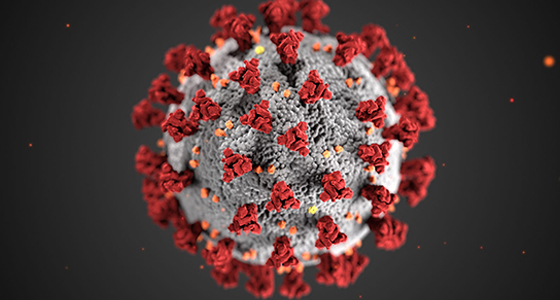Coronavirus disease 2019 (COVID-19) has resulted in increased hospital and intensive care unit (ICU) use. In the United States, few reports have characterized patients treated outside of the ICU.1 Northern California was an early epicenter of severe acute respiratory syndrome coronavirus 2 (SARS-CoV-2) community transmission in the United States. We report hospitalization and ICU admissions from Kaiser Permanente Northern California (KPNC), a regional integrated health care system serving 4.4 million members, constituting 30% of the area’s insured population.
We performed a retrospective cohort study of adults (≥18 years) with nasal/throat swabs positive for SARS-CoV-2 by polymerase chain reaction hospitalized between March 1, 2020, and March 31, 2020, at 21 KPNC hospitals. Tests were approved by infectious disease physicians based on public health and local guidelines. Patients were triaged according to clinician judgment. No patients were lost to follow-up.
We characterized patients by demographics, comorbid disease,2 severity of illness,2 ICU use, laboratory/chest film data, and highest level of respiratory support. Patients were treated according to national guidelines for pneumonia and acute respiratory distress syndrome. We report numbers (percentages) for binary/categorical variables and medians (interquartile ranges) for continuous variables. As of April 9, 2020, 14.8% of the cohort was still hospitalized. In-hospital mortality estimates were calculated for patients with discharge dispositions as of April 9, 2020.
The KPNC institutional review board approved the project with a waiver of informed consent.
Of 16 201 tests in adults, results from 1299 patients (8.0%) were positive for SARS-CoV-2. Of these patients, 377 (29.0%) were treated as inpatients and 113 (8.7%) were treated in the ICU.
The median age was 61.0 years (interquartile range, 50.0-73.0 years); 56.2% were men (Table). The most common comorbidity was hypertension (n = 164, 43.5%). Of 166 patients who underwent testing for influenza A/B or respiratory syncytial virus (44.0% of the cohort), none tested positive. Bilateral infiltrates on chest film were seen in 63.4% (n = 239). Overall, 34 patients (9.0%) received a prednisone-equivalent dosage of 20 mg/d or more.
Most patients were treated on the general ward or intermediate care unit (n = 264 [70.0%]); of whom 54.9% received supplemental oxygen through nasal cannula/face mask. A total of 113 inpatients (30.0%) required ICU admission and 110 (29.2%) received invasive mechanical ventilation.
Patients aged 60 to 69 years represented the most common age group both hospitalized (n = 93 [24.6%]) and admitted to the ICU (n = 31 [27.4%]) (Figure). However, adults of all ages were admitted, and the proportion of younger and middle-aged adults (≤59 years) who were hospitalized (n = 172 [45.6%]) was similar to the proportion of older adults (≥60 years) who were hospitalized (n = 205 [54.4%]).
Of 321 patients with discharge dispositions, 50 (15.6%) died in the hospital. Of 253 patients treated on the ward with discharge dispositions, 16 (6.3%) died. Of 68 patients treated in the ICU with discharge dispositions, 34 (50.0%) died.
Estimates of patients with positive SARS-CoV-2 test results who were (1) admitted to a KPNC hospital (29.0%) and (2) treated in an ICU (8.7%) are broadly similar to those from the US Centers for Disease Control and Prevention (21%-31% and 5%-12%, respectively) and contain less missing data.3 The KPNC estimate of ICU admissions using positive tests as denominator (8.7%) is lower than Italy (12%)4 but higher than China (5%).5 Given the differences in care among countries, it is important to report data from the United States. The KPNC mortality estimate is preliminary but reasonably consistent with the early Seattle, Washington, experience.1
Unlike previous studies, adults across age groups, not just elderly individuals, required inpatient care, with persons aged 60 to 69 years most commonly hospitalized. These findings underscore the importance of public health interventions that prevent transmission for the entire public to mitigate hospital surges.
The major limitation of this study is that these data represent an early phase of SARS-CoV-2 transmission in California. Several key factors were changing over this period, including implementation of physical distancing measures and testing speed, which could affect future results.
Corresponding Author: Laura C. Myers, MD, MPH, Kaiser Permanente Northern California Division of Research and Systems Research Initiative, 2000 Broadway, Oakland, CA 94612 (laura.c.myers@kp.org).
Accepted for Publication: April 20, 2020.
Published Online: April 24, 2020. doi:10.1001/jama.2020.7202
Author Contributions: Drs Myers and Liu had full access to all the data in the study and take responsibility for the integrity of the data and the accuracy of the data analysis.
Concept and design: All authors.
Acquisition, analysis, or interpretation of data: Escobar, Liu.
Drafting of the manuscript: Myers, Escobar, Liu.
Critical revision of the manuscript for important intellectual content: Parodi, Escobar, Liu.
Statistical analysis: Myers.
Obtained funding: Escobar, Liu.
Administrative, technical, or material support: Parodi, Escobar, Liu.
Supervision: Parodi, Escobar.
Conflict of Interest Disclosures: Dr Liu reported receiving a grant from the National Institutes of Health (R35GM128672) during the conduct of the study. No other disclosures were reported.
Funding/Support: This work was supported by The Permanente Medical Group Inc and Kaiser Foundation Hospitals Inc.
Role of the Funder/Sponsor: The funders had no role in the design and conduct of the study; collection, management, analysis, and interpretation of the data; preparation, review, or approval of the manuscript; and decision to submit the manuscript for publication.
ArticlePubMedGoogle Scholar
ArticlePubMedGoogle Scholar




